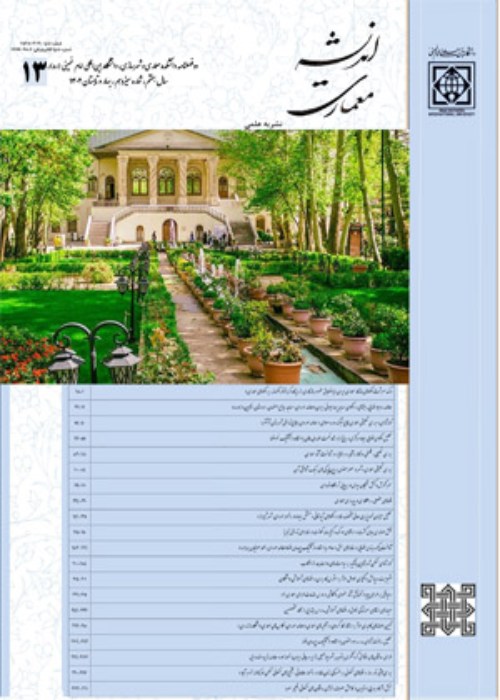The perception of visual aesthetics of construction volumes and massesFrom residents viewpoint,, District 2 of Tehran
Most of the city's viewing corridors induce a sense of confusion to the citizen of Tehran. In these sights and views, there is no harmony. It seems that the main contribution of these disturbances in the face of the city is related to the design and composition of the building masses. This nasty and inelegance image sits in the minds of the citizen that gets addicted to it or gets annoyed because of it. The more hardness is for trained eye that evaluates and adapts the features of these buildings base on the theoretical frameworks, principles, and rules of aesthetics. Research Question: Therefore, the main issue is the reason for this unreliability and getting used to this ugliness, and that how do today's designers and applicants consider the beauty and desirability of city buildings form and their composition? Do the citizens see the city's buildings beautiful? the present study seeks to answer those questions.
To progress the research, a qualitative research method called the Grounded Theory has been selected. The data is appeared based on interviews with 50 residents of district 2 of Tehran. The interview began with an open question: "How is your neighborhood, place of living, street or alley? Explain it". This preliminary question specifies that whether the interviewees had an experience of visual perception of constructional masses and forms during life in their neighborhood. Further, during the interview and according to the items in each interview, other questions are proposed in the formwork of research issues. Then, the texts of all the interviews have been written, and using techniques of research methodology, analyzed, and their theoretical concepts, extracted and categorized based on their content similarities and differences. In the following, each category of the matched concepts obtained a role in relation to other categories (conditions/context, action/ interactional strategies and consequences) and created a paradigmatic model. And after integratind the categories, deleting additional concepts, completing incomplete concepts, the core category of a phenomenon was identified.
The main categories obtained from the interpretation of the text of the interviews are:Conditional/contextual categories- Merchant urban management- Difference in the type of opinion to the urban development- Emergence of changes in the inhabitants desires and conditions Interactional categories- Visual inconsistency of building masses- Unbalanced combination of building masses with adjacent spaces- Disproportionate size of buildings relative to each other and adjacent spaces- Interest in low-density and low-rise building patterns- Interest in more opened and spacious space proportions- A wish for a less populated place/ a mismatch between space capacity and the dwelling populationConsequential categories- Forgetting about the current time of the living environment- Disconnecting with the living environmentBy reviewing the conceptual content of categories obtained, it seems that the perception and experience of inhabitants of Tehran's 2nd district about the aesthetic aspect of their living environment are visually annoying and unfavorable.What caused of the formation of this experience is the idea of the existence of "merchant urban management", "the difference in the type of opinion to the urban development", "the emergence of changes in the inhabitants’ desires and conditions "; in other words, these cases are the underlying and casual conditions for the formation of this experience. Subsequently, inhabitants in their understanding of the present situation regulate processes in their minds that explain the overall sense of "To perceive inelegance and undesirability from the city". The two main categories of "visual irregularities and distortions" and "shortage of open spaces and a lot densities" play the role of interactional categories in this experience; the categories inhabitants apply to perceive their experience of the living place. Finally, the consequence of the formation of these interactions and processes, or the same general phenomenon (To perceive inelegance and undesirability from the city), emerge in the poor communication of the interviewees with their living environment. The sense of "forgetting of the present time among the regret of the past and the future concern" and "the disconnecting to the living environment" because of the thought for immigration and indifference to the environment, are the consequences of this experience.
-
Aspects Affecting the Beauty and Ugliness of the City from the Residents’ Point of view, Case study: District 2 of Tehran
, Mohsen Habibi *, Hossein Zabihi
Journal of Iranian Architecture and Urbanism,



